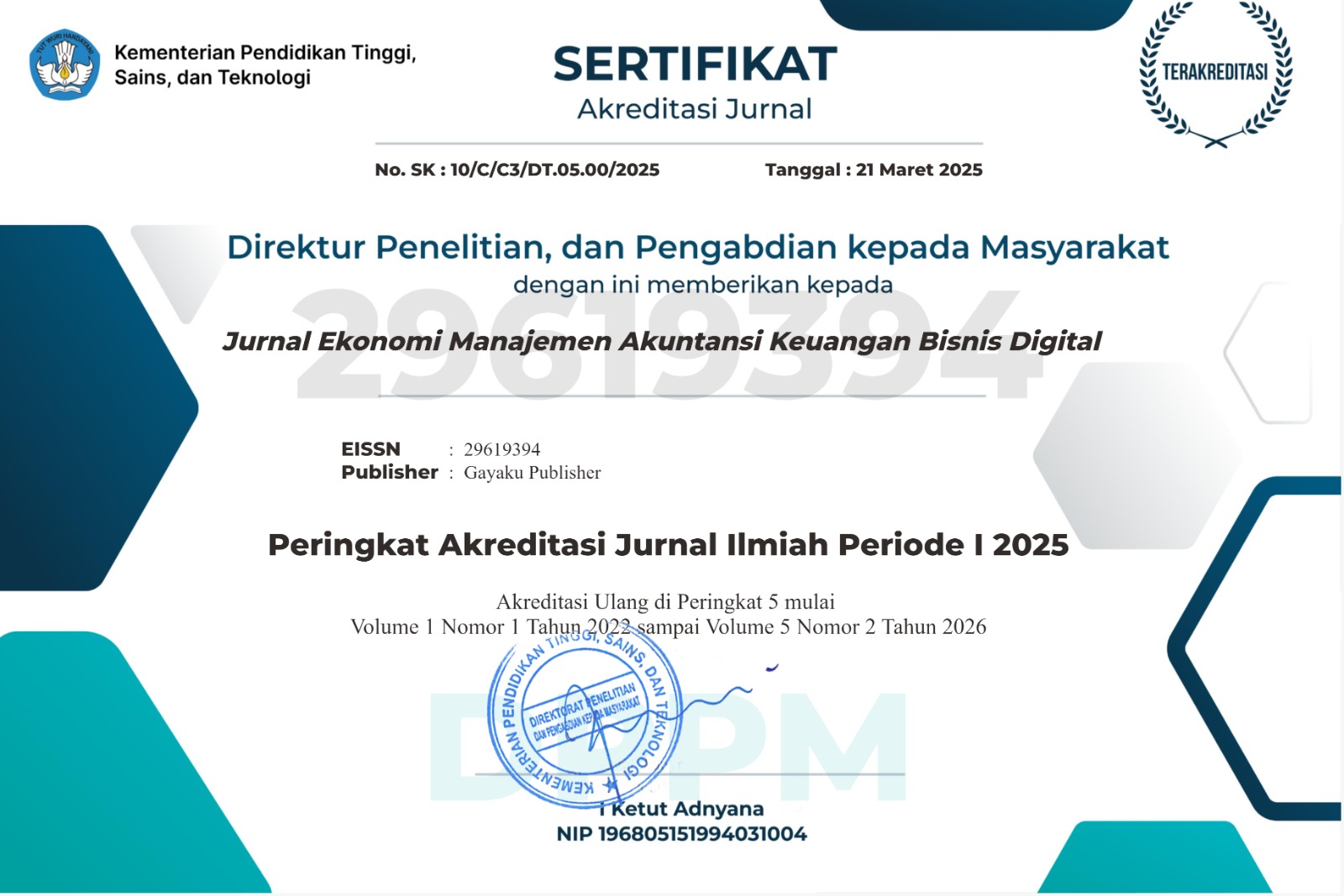Financial Performance Analysis of PT Semen Indonesia Tbk for the Period 2020–2022 Using the Du Pont System and Economic Value Added (EVA)
DOI:
https://doi.org/10.58222/jemakbd.v4i1.1309Keywords:
Financial Performance, Du Pont System, Economic Value Added.Abstract
Financial performance is a key indicator in assessing a company's success in managing resources to generate profit and create value for shareholders. Amid the increasingly intense competition in the cement industry, companies are required to demonstrate solid and sustainable performance in order to remain competitive. This study aims to assess the financial performance of PT Semen Indonesia Tbk using the Du Pont System and Economic Value Added (EVA) methods for the period of 2020 to 2022. The Du Pont System is evaluated using the ROI approach, which is derived from Net Profit Margin (NPM) and Total Asset Turnover (TATO). The Economic Value Added method is assessed through Net Operating Profit After Tax (NOPAT) and Capital Charge. This research uses secondary data obtained from the official website of the Indonesia Stock Exchange (IDX). The data collection method applied is documentation analysis, and the data analysis technique used is descriptive analysis. The results show that the financial performance of PT Semen Indonesia Tbk, as measured by the Du Pont System, resulted in a negative ROI value and ROI < 30%, indicating that the level of financial efficiency is still low or not yet optimal. However, the results of the financial performance analysis using the Economic Value Added (EVA) method show a positive value (EVA > 0), which indicates that the company's financial performance has been good each year, as it has succeeded in creating positive economic value.
References
Atma Hayat, dkk. 2021. Manajemen Keuangan. Medan: Madenatera.
Bursa Efek Indonesia. 2024. Laporan Keuangan Tahunan. Online. Https://Www.Idx.Co.Id/Id, Diakses Pada 16 Februari 2024
Fakultas Ekonomi dan Bisnis. 2023. Buku Pedoman Penulisan Proposal & Skripsi.Lubuklinggau. UNMURA
Irfani, A.S. 2020 Manajemen Keuangan Dan Bisnis, Teori Dan Aplikasi. Jakarta :PT. Gramedia Pustaka Utama.
Irham, Fahmi. 2020. Analisis Laporan Keuangan. Bandung: Alfa Beta.
Kasmir. 2018. Analisis Laporan Keuangan. Jakarta : PT.Raja Grafindo Persada.
Muhamad Hefrizal. 2018. Analisis Metode Economic Value Added untuk Menilai Kinerja Keuangan pada PT. Unilever Indonesia. Jurnal Akuntansi Dan Bisnis.4(1):64-72.
Ratnawaty Marginingsih. 2022. Analisis Kinerja Keuangan dengan Menggunakan Metode EVA dan MVA pada PT. Electronic City Indonesia Tbk. Jurnal Akuntansi Dan Keuangan. 9(2):145-151.
Surya Sanjaya. 2017. Analisis Du Pont System Dalam Mengukur Kinerjakeuangan PT. Taspen (Persero). Jurnal Riset Akuntasi dan Bisnis. 17(1):15-32.
Sugiyono. 2021. Metode Penelitian Kuantitatif Kualitatif dan R&D. Bandung: Alfabeta.
V.Wiratna Sujarweni. 2020. Metodologi Penelitian Lengkap, Praktis dan Mudah Dipahami. Yogyakarta: Pustaka Baru Press.
Yanti, Ni Putu Syu Krisna Weda & Diatmika, I Putu Gede. 2021. Analisis Du Pont System Terhadap Penilaian Kinerja Keuangan Industri Farmasi yang Terdaftar di Bursa Efek Indonesia.




.png)





_1.png)

